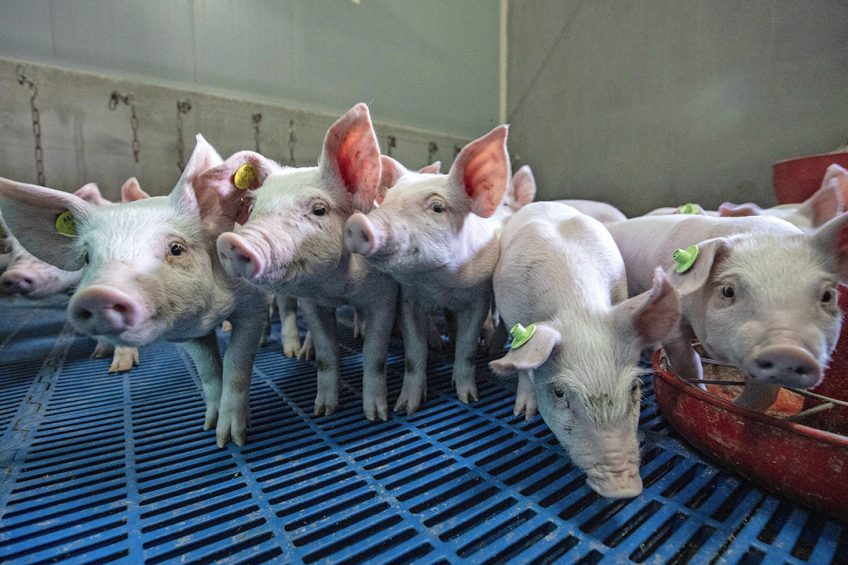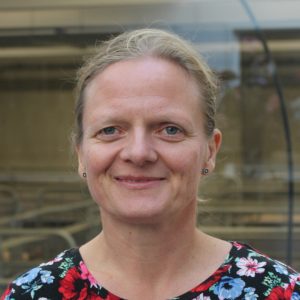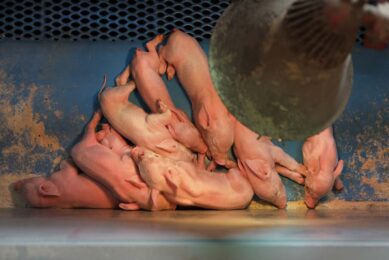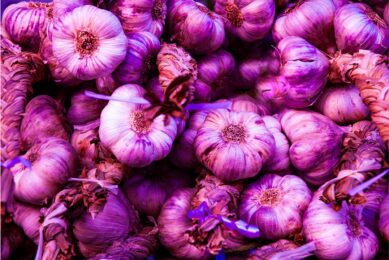Cost-effective ways to feed weaners without zinc

The search for weaning pigs without therapeutic levels of zinc oxide continues. As Denmark prepares for a 2nd edition of the Zero Zinc Summit in June 2022, various approaches and strategies are being researched, writes pig housing and welfare expert Vivi Aarestrup Moustsen.
In recent years, SEGES Danish Pig Research Centre has conducted several trials in the pursuit of finding the most cost-effective solutions of replacing therapeutic zinc from weaner diets without an increase in the need of antimicrobial use. Solutions to overcome the removal of zinc oxide can be simultaneously changed procedures, reduced protein levels in feed and increasing the feed particle size. The solutions can impact production costs and in addition, faster diagnostic tools are needed. Here are a few highlights.
Testing 3 weaning procedures without zinc
Tina Sørensen and her colleagues in SEGES tested a concept consisting of 3 procedures for weaning without therapeutic zinc in a Danish production herd. The 3 procedures, which were changed simultaneously were:
- Administration of liquid feed, 3-4 times daily, both before weaning and the first week after weaning;
- An optimised weaner diet with focus on protein levels and sources;
- Reduced mixing at weaning.
The procedures reduced the proportion of diarrhoea outbreaks to less than half compared to a control group that was weaned without therapeutic zinc. At the same time, there was a tendency for higher daily growth in the 35 days following weaning. The concept had no effect on pre-weaning growth, although some measures started before weaning.
The control group received feed without therapeutic zinc, and with 12% soybean meal in the weaning mixture, allocation of dry feed before and after weaning, and mixing of the pigs at weaning.
Protein trials – finding the right level
Protein reduction is a useful tool to reduce the incidence of diarrhoea when the feed can no longer contain therapeutic zinc. Niels Jørgen Kjeldsen and his colleagues in SEGES have conducted several large feed trials at SEGES’ trial station Grønhøj to study the effect of protein level in weaner diets on diarrhoea outbreaks.
By reducing the protein levels from 19% to 17.5%, there was a reduction in diarrhoea treatments by 30% and only a marginal reduction in production cost. With very low protein levels (16.5%) content with added extra amino acids (in addition to the commonly marketed amino acids) diarrhoea treatments can be reduced by 60%, but then the growth and feed conversion will be impacted and there-by increase the production cost.
Weaner feed formulation impacts diarrhoea incidence
Niels Morten Sloth and his colleagues in SEGES have recently completed a trial including 1,700 pigs where the effect of the formulation of the feed on diarrhoea outbreaks was investigated. The pigs were either fed with coarsely grounded feed or fine pelleted feed. The trial showed that feeding with coarsely grounded and expanded feed during the piglet period reduced the number of diarrhoea treatment days per pig by 44%, which is in line with the effect of therapeutic zinc. Roughly ground and expanded feed had a negative effect on the production cost during the weaner period, but this was regained during the finisher period.
Causes of post-weaning diarrhoea outbreaks
The diagnostic work during the feed trials performed by Niels Jørgen Kjeldsen and colleagues in SEGES has shown that in close to half of all diarrhoea outbreaks it has not been possible to detect a significant level of the classical bacterial enteric pathogens (enterotoxigenic Escherichia coli (ETEC), Lawsonia intracellularis, Brachispyra pilosicoli) in pen floor samples. This indicates that there is a need to develop better and faster diagnostic tools to avoid antibiotic treatment of pigs where diarrhoea bacteria are not present.
Zero Zinc Summit is coming back
The pig industry is facing a dilemma. How can we produce 7-30 kg pigs without using therapeutic, high-level zinc oxide at weaning – and without increasing the use of antibiotics to keep the pigs free from diarrhoea? This is the question we will be discussing at the Zero Zinc Summit 2022 in Copen-hagen on June 22-23, 2022. The first edition of the Zero Zinc Summit took place in 2019, also in Copenhagen, Denmark. At that time, many different solutions were presented.
 Beheer
Beheer









 WP Admin
WP Admin  Bewerk bericht
Bewerk bericht